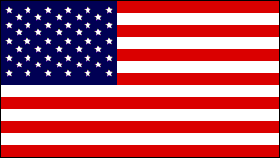Thermoplastic Welding Rod Identification Guide
Thermoplastic Identification Methods for Welding Rods
Need help selecting the right plastic welding rod? Call us at (440) 288-8137
How to select the correct plastic welding rod types for your application:
Two Simple Processes to Help You Achieve a Successful Welding Rod Material Match
The first step in creating a successful weld is determining which plastic you are dealing with. In most instances, only "like" products can be welded together successfully. To determine the type of plastic with which you are working:
- Perform a short test weld. If the plastic welding rod stays firmly affixed to the base material after it is thoroughly cooled, you have a successful material match.
- Perform a burn test. Take a small piece of the plastic to be welded and expose it to an open flame such as a match, lighter or small torch. Use extreme caution as the melted plastic is very hot. Follow descriptions below to determine which characteristics your material exhibits.
Plastic Welding Rod Type Characteristics
- PVDF - Polyvinylidene Fluoride. Produces an acrid odor and will burn to a black ash. Flame will self-extinguish.
- TPUR - Polyurethane (Estane). Produces a yellow flame, slight black smoke and a faint apple-like odor. Flame will not self-extinguish.
- ABS - Acrylonitrile Butadiene Styrene. Produces a black smoke, soot flakes and an acrid smell. Flame will not self-extinguish.
- PVC - Polyvinyl Chloride. Produces a black smoke and an acrid smell. Flame will self-extinguish. Avoid burning if possible - contains polyvinyl chloride.
- PE - Polyethylene (all types). Produces no smoke. Material drips like a candle and smells of wax. Flame will not self-extinguish.
- PP - Polypropylene. Produces no smoke. Material drips like a candle and smells of burnt oil. Flame will not self-extinguish.
- PC - Polycarbonate (Lexan). Produces a yellowish sooty smoke and smells sweet. The flame will self-extinguish.
- PS - Polystyrene. Produces a yellow flame, sooty smoke and smells of illuminating gas. Material drips. Flame will not self-extinguish.
- Halar - Produces a faint odor of burnt hair
- Corzan CPVC - Flame will self extinguish. Avoid burning as it will release potentially harmful chemicals if burned.
- VS-1 - Flame will self extinguish
- Acrylic - Produces a fruity smell and is slow to burn. Flame is blue with yellow tips
- CP-5 - Flame will self extinguish
- CP7-D - Flame will self extinguish. If welding rod is bent, there is a whitening at the bend.
- PVC-C - Flame will self extinguish
